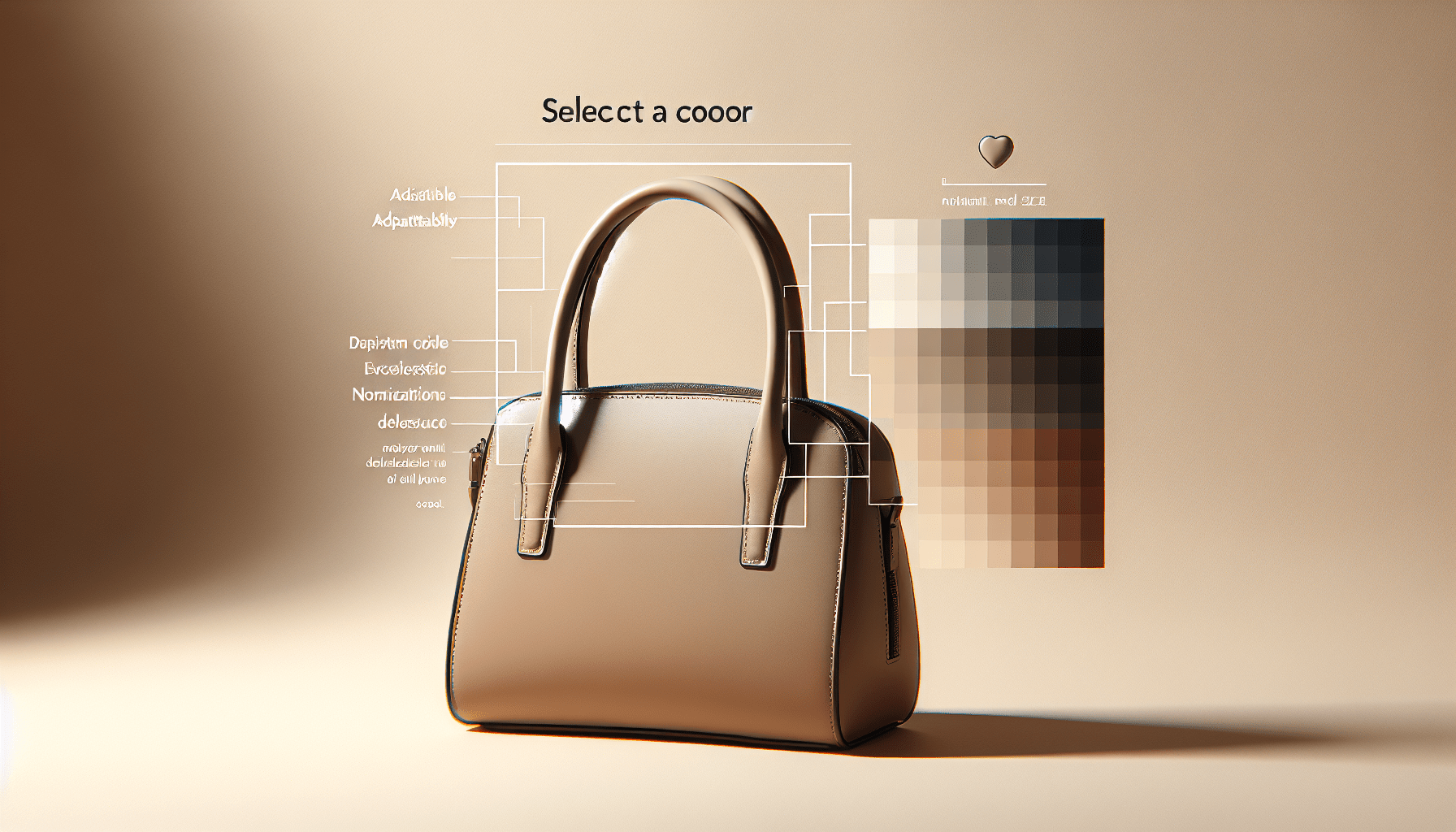How To Organize A Tote Bag
You’ve tried organizing your tote bag before, but somehow it always ends up becoming a chaotic abyss. Well, fret no more! In this article, we will show you a simple and efficient method to organize your tote bag, ensuring that everything has its own designated place. Say goodbye to rummaging through endless clutter in search of your keys or lip balm. With just a few easy steps, you’ll be able to transform your tote bag into a well-organized haven that will make your life so much easier. So let’s dive in and discover the secrets to a perfectly organized tote bag.
Choosing the Right Tote Bag
When it comes to organizing a tote bag effectively, choosing the right one is crucial. Before you begin thinking about organization systems, consider the size and capacity of the tote bag. Think about what you plan to carry in it on a daily basis. If you need to fit a laptop, notebooks, or other bulky items, opt for a larger tote bag with ample space. On the other hand, if you only need it for essentials like your wallet, phone, and keys, a smaller tote bag will suffice.
In addition to size, selecting a tote bag made from a durable material is essential. Look for materials like canvas, nylon, or leather that can withstand the wear and tear of daily use. These materials are not only long-lasting but also easy to clean. You’ll want a tote bag that can hold up well over time, ensuring that your belongings remain secure and protected.
Lastly, consider opting for a tote bag with compartments. Compartments provide designated spaces for your items, allowing for better organization. You won’t have to dig through a sea of items to find what you need; everything will have its place. Look for a tote bag with inner pockets, zippered sections, or even exterior pockets for added convenience.
Decluttering and Sorting Your Personal Items
Now that you have your perfect tote bag, it’s time to declutter and sort your personal items. Before you start organizing, empty your tote bag completely. This will give you a clean slate and allow you to assess the items you have.
Once your tote bag is empty, it’s time to sort and categorize your items. Group similar items together, such as your wallet, phone, keys, and any other essentials you carry daily. This makes it easier to find what you need when you’re on the go. It’s also a great opportunity to declutter and get rid of any unnecessary items that may have accumulated in your bag.
When sorting, consider your daily essentials. Keep items that you use frequently within easy reach. Items that you only need occasionally can be placed in a separate compartment or pocket. This way, you can access your most important items quickly and efficiently.
Organizing Essentials in the Main Compartment
The main compartment of your tote bag is where you’ll want to focus on organizing your essentials. To maximize space, place larger and bulkier items first. This ensures that they are secured at the bottom of the bag and won’t shift around when you’re on the move. Items like a laptop, water bottle, or a book can be placed at the bottom.
For loose items like pens, lip balm, or headphones, utilize small pouches or bags. This prevents these smaller items from getting lost or tangled with other items in your bag. By keeping them within a pouch, you can easily find what you’re looking for without rummaging through your tote bag. Plus, it adds an extra layer of organization.
To further enhance organization, consider using dividers or organizers. These tools create segments within the main compartment, allowing you to separate different types of items. For example, you can have one section for office supplies and another for personal care items. This keeps everything in its place and makes it easier to locate specific items as needed.
Utilizing the Exterior Pockets and Compartments
The exterior pockets and compartments of your tote bag are additional spaces that can be utilized for organization. To make the most of these pockets, designate specific ones for frequently used items. For example, you can dedicate one pocket for your phone, another for your keys, and yet another for your hand sanitizer. This way, you’ll always know where to find these essential items without having to search through the main compartment.
When considering the placement of items in exterior pockets, think about safety and accessibility. Keep items that you need quick access to, like your ID or transit pass, in easily reachable pockets. On the other hand, items that are less frequently used or require more security can be placed in zippered compartments or hidden pockets.
For smaller items like chapstick, earphones, or a small notebook, use small bags or pouches. Not only does this keep these smaller items organized, but it also prevents them from getting lost or damaged. Plus, having them contained in their pouch makes it easy to transfer them between bags if needed.
Separating Work and Personal Items
If you use your tote bag for both work and personal purposes, it’s essential to separate these two aspects effectively. By dedicating specific sections for work and personal items, you can maintain organization and prevent any mix-ups or confusion.
Consider using different pouches or folders for paper documents. This way, you’ll have a designated space for work-related papers, ensuring they don’t get mixed in with personal items. You can use color-coded or labeled pouches to make identification even easier. Having separate spaces for work and personal documents also makes it easier to transition between tasks and maintain a professional image when needed.
Additionally, consider keeping separate sets of essentials for work and personal use. For example, if you use specific pens or notebooks for work, keep a designated set within your work section of the tote bag. This saves you the hassle of always having to transfer these items between bags and helps you stay organized and prepared for both work and personal tasks.
Securing Valuables and Keeping Them within Reach
When carrying valuables in your tote bag, it’s important to take extra precautions to keep them secure and easily accessible. Consider investing in a small lock or keychain to secure the main compartment of your tote bag. This adds an extra layer of security and gives you peace of mind knowing that your belongings are protected.
Utilize hidden pockets or compartments within your tote bag. These discreet spaces are perfect for stashing items like your wallet, passport, or other valuables. They provide an added level of security and keep your valuables out of plain sight. Just be sure to remember where you’ve stowed them!
For essential items that you need quick access to, like your phone or keys, keep them near the top of the bag or in easily reachable pockets. This way, you won’t have to rummage through your tote bag to find them when you’re in a hurry. Being able to retrieve these items with ease is not only convenient but also ensures that they remain safe and secure.
Maintaining Cleanliness and Order
To keep your tote bag organized and in tip-top shape, it’s important to regularly clean it out. Set aside some time every few weeks to empty out your bag completely and assess the items inside. This gives you the opportunity to declutter any unnecessary items, refresh your organization system, and remove any dirt or debris that may have accumulated.
Optimize your organization system as needed. As your needs change or you acquire new items, your tote bag organization system may need some adjustments. Don’t be afraid to experiment with different methods or rearrange compartments and pockets to better suit your needs. The key is to find a system that works for you and keeps your tote bag tidy and functional.
One important tip to remember is to avoid overstuffing your tote bag. Overstuffing not only makes it harder to find items but also puts strain on the bag’s seams and handles. Be mindful of the capacity of your tote bag and resist the urge to cram it with more than it can comfortably hold. By maintaining a sense of order and avoiding overstuffing, you’ll prolong the life of your bag and keep it looking its best.
Creating a Travel-Friendly Tote Bag
If you plan on using your tote bag for travel, consider adapting your organization system to fit your specific travel needs. When packing for a trip, it’s important to pack versatile and multi-purpose items. This minimizes the number of items you need to carry and maximizes the space in your tote bag.
Think about the specific travel purpose. For example, if you’re going on a day trip, you may need to pack snacks, a water bottle, a camera, and a light jacket. If you’re traveling for work, you may need to carry a laptop, documents, and a change of clothes. Tailor your organization system to cater to the items you’ll need for your specific travel purpose.
Utilize travel organizers and packing cubes. These handy tools help compartmentalize your belongings and keep them neatly organized within your tote bag. You can use packing cubes to separate clothing items or travel organizers to keep toiletries and electronic accessories in one place. This makes it easier to locate items and ensures that everything stays in its place while you’re on the move.
Customizing Your Tote Bag Organization System
Your tote bag is a reflection of your personal style, so why not personalize its organization system too? Get creative and add accessories or patches to make your tote bag truly unique. Consider adding a keychain with your initials or attaching a fun charm to the zipper. These small touches not only add a touch of personality but also help you quickly identify your bag in a sea of similar totes.
Experiment with different organization methods. What works for someone else may not work for you, so feel free to try different approaches until you find the one that suits your needs best. You can rearrange the placement of compartments, adjust the size of pouches, or even add extra dividers. The beauty of organizing your tote bag is that it’s customizable, allowing you to create a system that works specifically for you.
Lastly, adapt your system to fit your evolving needs. As your lifestyle changes, your tote bag organization system may need to adapt as well. Be open to making adjustments and modifications along the way. For example, if you start a new hobby or take on a new job, you may need to create additional compartments or make changes to your existing ones. The key is to stay flexible and ensure that your organization system continues to serve you well.
Optimizing Comfort and Ergonomics
In addition to organization, it’s important to optimize comfort and ergonomics when carrying a tote bag. Pay attention to the length of the tote bag straps and adjust them to a comfortable length. Straps that are too short can dig into your shoulder, while straps that are too long can cause the bag to sway and put strain on your back. Find the sweet spot that allows for comfortable, hands-free carrying.
Distribute weight evenly throughout the bag. When packing your tote bag, make an effort to distribute heavier items evenly. This prevents one side of the bag from becoming overly weighed down, which can affect your posture and overall comfort. It’s also important to be mindful of how much weight you’re carrying. If your tote bag starts to feel too heavy, consider reevaluating what you really need to carry with you.
Consider using a padded strap or adding cushioning to the handles of your tote bag. This can provide additional comfort, particularly if you often carry heavy items. Padded straps or cushioned handles help distribute the weight more evenly and reduce pressure on your shoulder or hands. This small adjustment can make a big difference in your overall comfort when using your tote bag.
In conclusion, organizing a tote bag doesn’t have to be a daunting task. By following a few simple tips and investing some time in creating an efficient system, you can transform your tote bag into a well-organized and functional accessory. Remember to choose the right tote bag, declutter and sort your personal items, utilize compartments and pockets, separate work and personal items, secure valuables, maintain cleanliness, create a travel-friendly system, personalize your organization, and optimize comfort and ergonomics. With these strategies in place, you’ll be ready to tackle any day with ease and style, all while keeping your essentials close at hand. Happy organizing!




